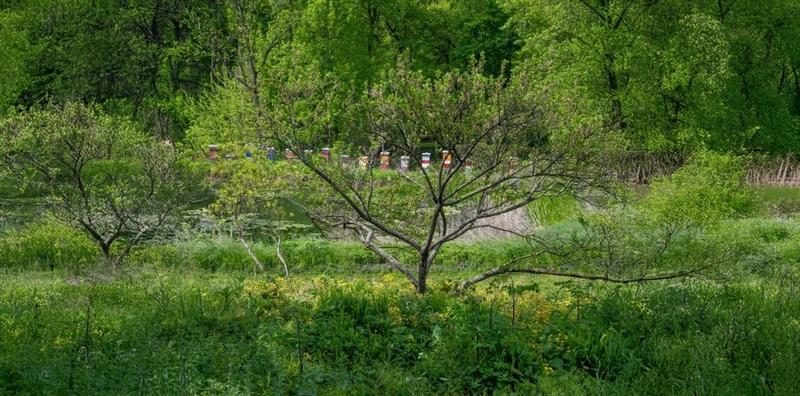Year-Round Interest
Create a garden that thrives from spring to fall with native plants: low-maintenance, wildlife-friendly, and eco-smart. Native plants, perfectly adapted to your region, thrive with little care, promote biodiversity, and showcase nature’s changing seasons. Discover four plant combinations you can use now!
Native Plant Combos for Year-Round Interest
Designing a garden that transitions gracefully from spring through fall isn’t just about aesthetics, it’s about creating a resilient, low-maintenance ecosystem that supports wildlife and enriches the soil. Native plants, adapted over millennia to your region’s conditions, make this achievable. They thrive with minimal input, foster biodiversity, and tell nature’s seasonal story, flower by flower.
Landscape designers today increasingly advocate for native planting due to their ecological compatibility and sustainability. These plants require less water, fertilizer, and maintenance while supporting local wildlife, and offer cost savings and environmental benefits for homeowners.
Here are four plant combos you can create! Perfect for creating layers of seasonal interest, ecological function, and visual impact.
Combo 1
Aquilegia canadensis: Blooms in late spring with nodding red–yellow flowers that provide early nectar for hummingbirds and bees. This hardy perennial (USDA Zones 3–8) forms clumping, fern-like foliage that suppresses weeds and returns reliably.
Agastache rugosa ‘Little Adder’: Produces fragrant violet spikes from late spring through fall. Compact and drought-tolerant once established, this plant is a magnet for hummingbirds and bees! Making it both practical and pollinator friendly.
Aster oblongifolius ‘Twilight Sky’: Delivers late-season blooms, boosting pollinator support when the garden’s color is fading and adds vertical structure to fall landscapes.
Potential Design Layout:
Front-row columbines create early-season charm; mid-row Agastache sustains vibrant interest; back-row asters conclude the season gracefully. Dense grouping mimics natural layered planting for resilience and pollinator efficiency.
Combo 2
Carex radiata: forms a fine-textured, evergreen-like groundcover, ideal for suppressing weeds and adding year-round textural interest.
Asclepias tuberosa: A vivid orange native that sustains monarch butterflies and other pollinators during peak summer, all while thriving in sun and dry soils.
Andropogon gerardii ‘Blackhawks’: Introduces bold vertical movement and rich autumn tones, anchoring the composition as other blooms depart.
Potential Design Layout:
Begin with a sweeping foreground of Carex radiata as a living green carpet. Mid-season, intersperse clustered tufts of Asclepias for dramatic visual and ecological impact. Finally, place ‘Blackhawks’ at the rear or as sculptural accents to carry visual interest into fall.
Combo 3
Phlox divaricata 'Blue Moon': Early Spring bloomer with gently fragrant violet flowers; ideal for partial shade.
Aster divaricatus: Illuminates shaded areas in fall with delicate white blooms.
Carex pensylvanica: Evergreen groundcover provides year-round texture, suppresses weeds, and ties the planting visually together.
Potential Design Layout:
Use the sedge as a foundational green groundcover, tuck in clusters of Phlox for spring, and back with the Aster for fall sparkle. Strategy draws from the RHS: matching species to microclimate and layering for depth!
Combo 4
Iris versicolor: Thrives in wet or marginally moist soils; spring blooms are rich purple-blue and highly attractive to wetland pollinators.
Lobelia cardinalis: Bold red spikes that flourish in moisture-rich midsummer and are hummingbird favorites.
Solidago rugosa ‘Fireworks’: Fall-blooming golden “fireworks” draw migrating monarchs, complete the seasonal transition, and provide winter structure.
Design Layout:
Ideal for rain gardens or damp zones! Place Iris in the foreground where spring color greets visitors early, Lobelia mid-layer, and Solidago at the rear for a striking, grand finale for the growing season!
Why These Designs Work
Ecological Layering: Each combo mimics natural habitat stratification: groundcover, mid-flower, and structure, enhancing resilience.
Right Plant, Right Place: Matching species to their microenvironments ensures long-term health. Designers caution that site analysis: light, soil, moisture—is crucial in planting success.
Dense Planting: Clumping natives reduces weed invasion and maintains soil moisture while supporting pollinators.
Year-Round Function: From early nectar and fragrance to seedheads for winter wildlife habitat, each planting phase offers ecological returns.
In The End... It Does Matter!
By embracing ecological design principles: matrix planting, seasonal layering, and site-appropriate selection, you create more than a garden: you instill a dynamic, resilient living system. These four combos not only deliver visual drama from spring to fall but also nurture wildlife, stabilize soil, and reduce upkeep.


